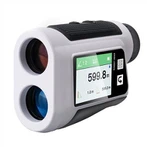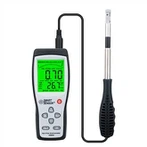Detailed explanation of the usage method of induction digital display test pen
Button Description:
A key "SELECT": refers to the direct measurement key (far from the LCD screen), which means when using the metal front end of the pen (referred to as the probe) to directly contact the circuit, please press this button;
B key "INDUCTANCE": For the induction/breakpoint measurement key (closer to the LCD screen), that is, when using the probe to sense the line (note that it is induction, not direct contact), please press this button.
Regardless of how the text on the stylus is printed, generally speaking, the one farther away from the LCD screen is the direct measurement key, and the one closer to the LCD screen is the induction/breakpoint measurement key. If the layout is not like this, it indicates that it is a counterfeit or low-quality product. For your safety reasons, it is not recommended to purchase.
Direct detection:
1. Gently touch the direct measurement (DICT) button, and the metal front end of the measuring pen directly contacts the tested object:
1.1 The last digit represents the measured voltage value (this test pen is divided into five voltage ranges of 12V, 36V, 55V, 110V, and 220V, and typically ≤ 36V is not considered life-threatening);
When the display value reaches 70% before reaching the high range, display the low range value;
1.3. When measuring non ground direct current, one should touch the other pole (such as the positive or negative pole) with their hands.
When the electric pen directly contacts the live wire, the indicator light will immediately light up regardless of whether the hand touches any measurement key:
2.1 When the hand does not touch any measurement key, the indicator light will light up and display 12V, which is inaccurate;
When the hand touches the sensing/breakpoint measurement key, the indicator light will light up and display 110V, which is inaccurate;
2.3 When the hand touches the direct measurement button, the indicator light will light up and display 220V, which is accurate;
2.4 In summary, once the indicator light comes on without touching any measurement keys, it indicates the presence of AC live wire 220V. Remember!
3. When the hand touches the direct measurement key and the pen directly contacts conductive objects such as the human body, live wire, neutral wire, ground wire, metal, etc., the indicator light may light up. At this time, the actual voltage is based on the reading. If there is no reading, it indicates no voltage.
When the hand touches the sensing/breakpoint measurement key and the pen directly contacts the object being tested, there are two situations:
4.1 If the indicator light is on and displays 110V, it indicates that there is AC live wire 220V, remember!
4.2 The indicator light is not on, but a "high voltage symbol" appears. Please refer to points 1 and 2 in "III. Indirect Detection".
Indirect detection (also known as induction detection):
1. Induction detection: Gently touch the INDUCTANCE button, and the metal front end of the measuring pen is close to the object being tested (note that it is close, not directly in contact). If the "high voltage symbol" appears on the display screen, it indicates that there is AC power inside the object being tested.
2. Breakpoint detection: When measuring a wire with a breakpoint, lightly touch the INDUCTANCE button, and the metal front end of the measuring pen should be close to the wire (note that it is close, not directly in contact), or directly in contact with the insulation outer layer of the wire. If the "high voltage symbol" disappears, this is the breakpoint.
3. This function allows for easy resolution of zero and phase lines (increasing the distance between lines when measuring parallel lines). Detect the radiation and leakage of microwaves.
matters needing attention:
1. The buttons do not need to be pressed hard.
2. During testing, it is not allowed to touch two measurement keys at the same time, otherwise it will affect sensitivity and test results.






